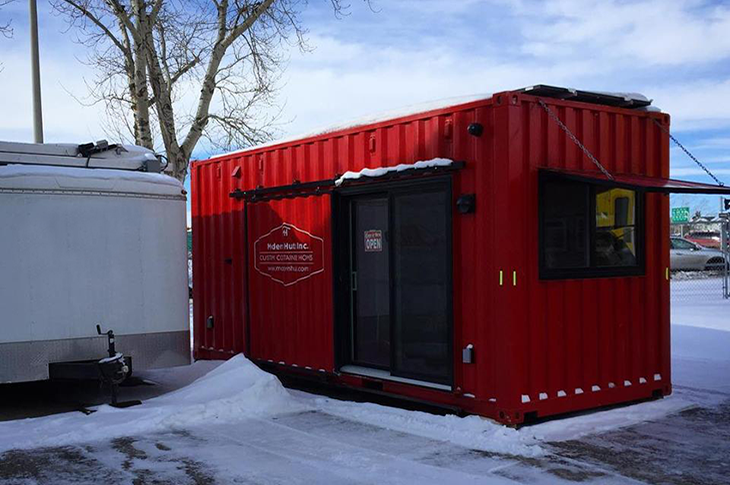SAIT's modest grant for tiny house has big payoff

When a shipping container was trucked onto the parking lot beside SAIT’s Green Building Technologies (GBT) house, it seemed a big delivery had just arrived.
But a closer look revealed the container was a compact house built by Modern Huts.
Appearing at GBT during Calgary’s serious winter cold snap was right on cue. The house was there for a check-up, to learn how it could be made more energy-efficient and more commercially viable for even the harshest of Canadian weather.
SAIT researcher Ben Hildebrandt – Principal Investigator of Material and Advanced Component Assemblies in GBT – was part of the team that studied the 20-foot structure and made recommendations for future construction.
“We analyzed the efficiency of the envelope of the home by completing a blower door test and thermography assessment,” explains Hildebrandt. “This allowed us to determine areas of air leakage or heat loss that could be reduced.”
Small, but mighty
The owner of Modern Huts, Jeremy Johnson, was inspired a number of years ago to build small, more energy-efficient and durable homes. Shipping containers fit the bill on many levels but aren’t known for their insulative properties.
The container home found its way to SAIT thanks to Anouk Kendall at Decentralized Energy Canada – a national technology accelerator. She connected Johnson with SAIT as well as the National Research Council. The NRC offers IRAP (Industrial Research Assistance Program) Interactive Visit grants for small and medium-sized enterprises to undertake a quick project to help with the commercialization of a product.
In other words, sometimes it takes a village of like-minded individuals passionate about efficiency and sustainability to advance a product to market.
Hildebrandt explains that SAIT’s work on the house, “determined a couple main areas of air and heat loss that could be easily improved upon in future iterations of prefabricated shipping container housing.”
But here’s the thing. In order to make a metal home comfortable and energy-efficient, insulation is key. But too much insulation means you cut down on already snug living quarters.
Hildebrandt is confident the roof, wall and floor assemblies they proposed to Johnson will meet performance requirements at a reasonable cost, and still leave plenty of interior space for living in compact style.
Johnson is pleased with the research and with SAIT’s recommendations.
“Working with SAIT was a really good experience,” says Johnson.
“We were looking to coordinate with them to help target our energy efficiencies and our new smart technology. We were definitely able to get our research verified by this credible institution.”
Bring your ideas to ARIS for a partnership with our expert researchers to develop your technology. Get started by submitting your project inquiry.

Oki, Âba wathtech, Danit'ada, Tawnshi, Hello.
SAIT is located on the traditional territories of the Niitsitapi (Blackfoot) and the people of Treaty 7 which includes the Siksika, the Piikani, the Kainai, the Tsuut’ina and the Îyârhe Nakoda of Bearspaw, Chiniki and Goodstoney.
We are situated in an area the Blackfoot tribes traditionally called Moh’kinsstis, where the Bow River meets the Elbow River. We now call it the city of Calgary, which is also home to the Métis Nation of Alberta.